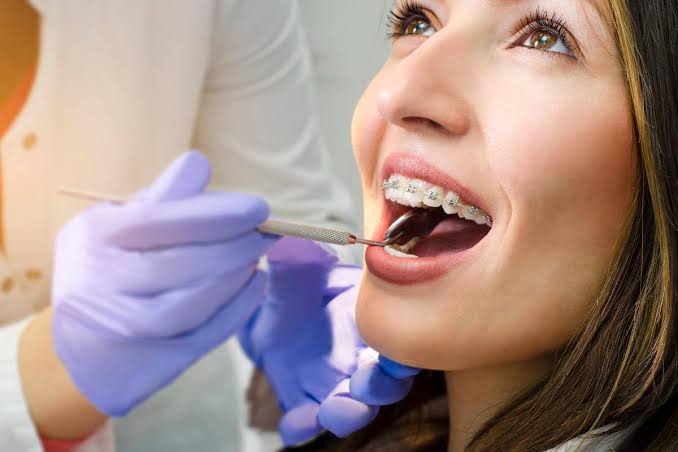Have you ever felt self-conscious about your crooked teeth? Do you dream of having a perfect, straight smile? If so, you may have considered getting dental braces.
Dental braces are an orthodontic treatment that can help fix misaligned or overcrowded teeth. But did you know that there are different types of dental braces? Each type has its unique advantages and disadvantages.
In this comprehensive guide, we will look into the different types of dental braces so you can decide which one suits you. So, let’s dive in!
Traditional Metal Braces
The most recognizable form of orthodontic care, traditional metal braces, has been used for decades. They consist of high-grade stainless steel brackets affixed to each tooth and connected by a thin archwire.
The orthodontist periodically adjusts this wire to shift the teeth gradually into their desired position. It is a highly effective treatment that can fix even the most challenging cases.
These are usually the most affordable option. This makes them a popular choice for younger patients.
However, one downside of traditional metal braces is their appearance. The brackets are noticeable and may affect your self-esteem during treatment.
Ceramic Braces
Ceramic braces work the same way as traditional metal braces, but they have one significant difference: the brackets are made from a clear or tooth-colored ceramic material. This means they blend in with your teeth, making them less noticeable than their metal counterparts.
Understanding this difference between ceramic braces vs metal braces is crucial to making the right decision.
Ceramic braces are perfect for those who want a discreet treatment option without compromising efficiency. They are as effective as metal braces but can be more expensive due to their aesthetic appeal.
Lingual Braces
Lingual braces are one of the dental alignment options that provide the most discreet treatment. They are placed behind the teeth, making them virtually invisible to others.
These braces work like traditional metal braces but can be customized to fit each tooth’s shape and size. This makes them more comfortable than their metal counterparts.
One downside of lingual braces is that they may take longer to get used to, and speech may be affected initially. They also tend to be more expensive than traditional braces.
Self-Ligating Braces
Self-ligating braces have a built-in mechanism that holds the archwire within the bracket, eliminating the need for elastics or metal ties. This can result in less friction and often makes it easier to keep them clean.
Some may find them more comfortable due to the reduced pressure they exert. However, they may also come with a higher price tag.
Invisalign
As the name suggests, Invisalign is virtually invisible and offers maximum discretion during treatment. These aligners are also more comfortable than metal or lingual braces since they are made from smooth plastic.
However, Invisalign is unsuitable for all cases and may be more expensive than traditional braces. It also requires strict adherence to the recommended wearing time of 20-22 hours daily to be effective.
Exploring the Different Types of Dental Braces
Understanding the different types of dental braces and their benefits is crucial in making an informed decision about your orthodontic treatment. Whether it’s traditional metal braces or newer options like ceramic or lingual braces, the right choice can lead to a healthy and confident smile.
So what are you waiting for? Schedule a consultation with your orthodontist to discuss your options today! Your confident and healthy smile awaits!
Was this article helpful? If so, don’t forget to check out our other blog posts for more informative content.




